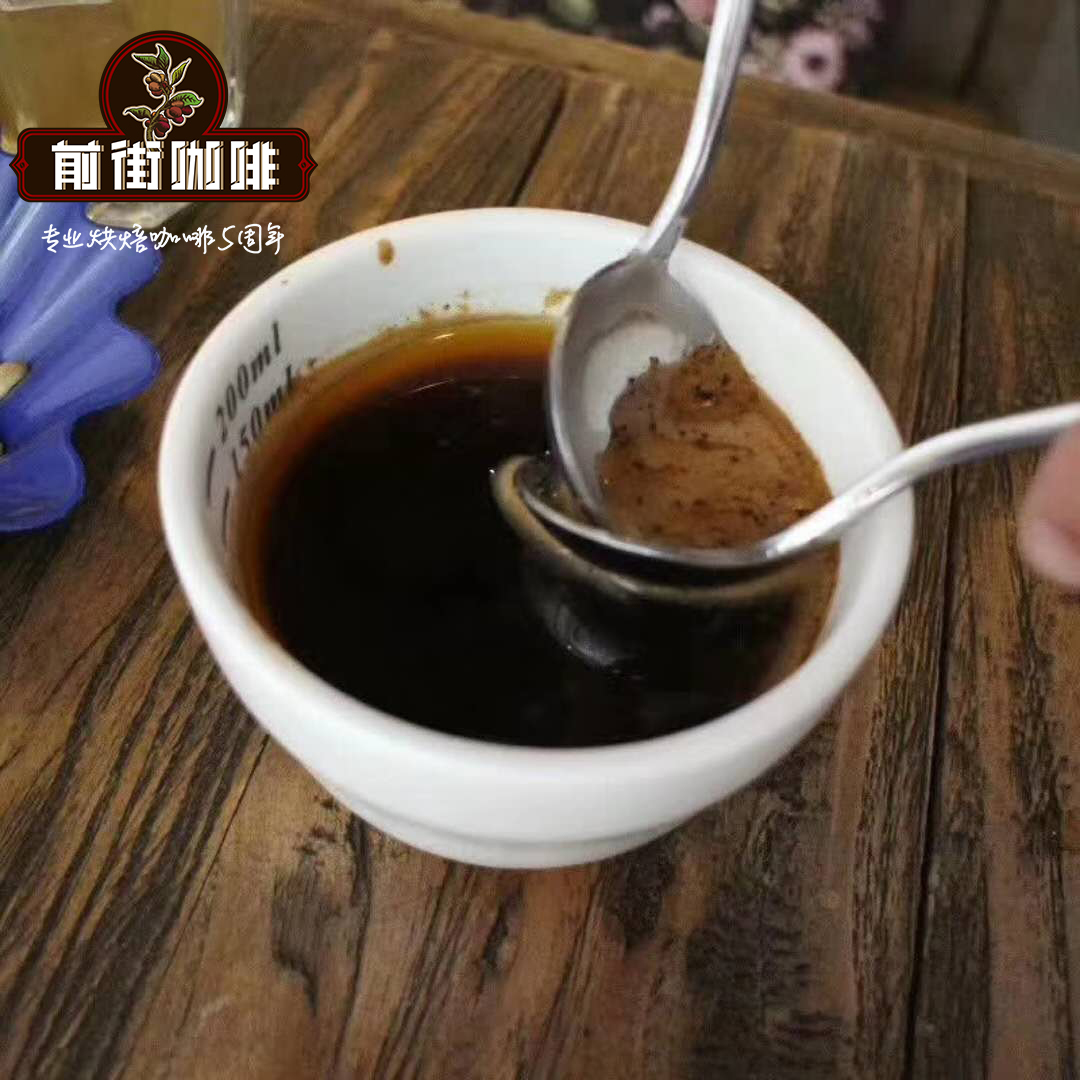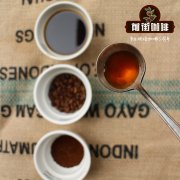Introduction to the flavor characteristics of Kenyan coffee beans at the top of the equator. How much is the Kenyan coffee bean

Professional coffee knowledge exchange more coffee bean information please follow the coffee workshop (Wechat official account cafe_style)
Kenyan coffee, which is popular in Western Europe, originates from Kenya and is proud of its production. Kenya-A country located on the equator, Kenya's plateau has a very well-drained volcanic soil and is a rare area with low rainfall in a tropical climate. In such an environment, Kenyan coffee, a unique high-quality coffee in the world, was born here.
Kenyan coffee is mainly produced in a wide range of areas, stretching from the Ugandan border to the Great Rift Valley, Ruiru, Kiambu, Sika and other southwestern plateaus centered around Nairobi. After washing, Kenyan coffee beans show small particles in a green to grayish green state, known as "Kenya Arabica".
The overall flavor of Kenyan coffee is heavy, but the balance is good, and the taste is very strong, so it is most suitable for drinking a cup when thinking about the bottleneck, so that the taste of coffee surrounds the tip of the tongue and inspires inspiration.
Kenya is adjacent to Ethiopia, but the varieties, appearance and flavor of coffee beans in the two countries are very different. Kenyan coffee beans are fully washed, of which the most special is the "double washing method". The main coffee beans are SL-28 and SL-34.
Coffee-producing countries that run through the equator
Kenya, the full name of the Republic of Kenya, is located in eastern Africa, bordering Somalia, Tanzania, Uganda, Ethiopia and Sudan, and bordering the Indian Ocean to the southeast, with a 536-kilometer coastline.
Kenya is high in the middle and low on all sides. The Central Highland has the highest peak in Kenya and Mount Kenya, the second highest in Africa, which is about 5199 meters above sea level. Surrounded by a plateau with an average elevation of 1500 meters, the coastal zone is a plain. The equator runs through Kenya, and the whole land is between 10 °north and south latitudes, belonging to tropical coffee producing areas.
Kenya has two rainy seasons throughout the year, March-June and October-December, so there are also two seasons for harvesting coffee beans. October-December is the main production season, accounting for 60% of the annual output; June-August is the by-product season, accounting for 40% of the annual output.
A unique variety in the laboratory
The history of coffee cultivation in Kenya can be traced back to the end of the 19th century. At that time, French missionaries first introduced Arabica coffee trees from Yemen, but the production of coffee beans was very small because the coffee trees did not adapt to the local climate. It was not until 1893 that bourbon trees were introduced from Brazil, and the scale of coffee bean cultivation gradually expanded.
The coffee beans produced in Kenya are mainly bourbon mixed SL-28 and SL-34, and other varieties have been planted in recent years. SL28 and SL34 are the most representative coffee beans in Kenya. They are bourbon hybrids developed by the Sott laboratory in the early 20th century, in which "SL" is the abbreviation of the laboratory, and "28,34" is the code name for the developers of the laboratory.
After laboratory identification, SL-28 and SL-34 have Kenyan characteristics of sour aroma, are typical Kenyan coffee species. These two coffees have low cold resistance and drug resistance, but adapt to the high concentration of phosphate soil in Kenya, and can breed coffee beans with unique citric acid, clean sweetness and significant berry flavor in this environment.
Variation of traditional washing
Kenyan coffee beans are all treated with water, of which the more special is the "double washing method". The "double washing method" refers to the coffee beans being washed twice and fermented twice. The washing trough with this treatment method has two layers, high and low, which are used for the first and second washing respectively. Harvest the coffee fruit, remove the defective fruit in the middle, remove the peel, pour it into the upper fermentation tank for fermentation or direct dry body fermentation.
After fermenting for a period of time, wash the coffee beans with water to remove most of the pectin from the surface of the coffee beans. Then put the coffee beans into the lower fermentation tank for secondary fermentation. Change the circulating water every few hours during fermentation to prevent coffee beans from smelling and mildew. Wash the coffee beans again with water to remove the remaining pectin from the coffee beans.
Rinse the shell beans and soak them in the sink for more than 12 hours before drying them. After double washing, Kenyan coffee beans have a plump appearance, diverse flavors and distinct levels.
original multiple grading system
Kenya has its own strict classification of coffee beans. This set of grading is based on the particle size and quality of coffee beans (as shown in the figure below).
There are more Kenyan coffee beans of AA, AB and PB grades on the market. In recent years, there is an AA TOP coffee bean on top of the AA grade coffee beans.
extinct volcano "feeds" coffee beans
Kenyan boutique coffee is mainly grown in the highlands around Mount Kenya, ranging from 1600 meters to 2100 meters above sea level. The soil here belongs to volcanic soil, showing crimson and orange, rich in mineral phosphorus and good drainage.
In addition to the mountains around Kenya, Mount Aigong, at the junction of western Kenya and Uganda, has also bred a good variety of Kenyan coffee beans. There are 10 coffee producing areas throughout Kenya, including Nyeri, Murang'a, Kirinyage, Embu, Meru, Kiambu, Machakos, Nakuru and Kisll. Nyeri is one of the most important producing areas. The area is dominated by the coffee industry, with the famous extinct volcano, Mount Kenya, with an elevation of 1200 meters to 2300 meters above sea level. October-December is the main production season, and June-August is the by-product season.
The Karuotu processing plant is located in the Nyeri producing area and has double advantages in climate and geography. The processing plant cooperates with more than 1000 coffee farmers nearby, including many excellent teams of coffee farmers.
What has to be mentioned is the Group A coffee grower team, which has won the "DORMAN Micro-processing Plant Coffee Competition" many times and has extensive experience in growing and picking coffee beans.
The Group A coffee farmer team is composed of dozens of small farms with planting experience, planting only 1 hectare of coffee trees per person and picking only the highest quality red fruits. The "Kenya AA washing" handled by Group A coffee farmers' team has the flavor of brown sugar, sugar cane, apricot and chocolate. It has a lively sour taste and high sweetness. On a hot summer day, drinking a cup of Kenyan coffee will bring you a different experience of relieving summer heat.
END
Important Notice :
前街咖啡 FrontStreet Coffee has moved to new addredd:
FrontStreet Coffee Address: 315,Donghua East Road,GuangZhou
Tel:020 38364473
- Prev

Flavor characteristics of 72-hour refined washed coffee beans in Kenya _ what is 72-hour delicate washing treatment
Professional coffee knowledge exchange more coffee bean information please follow the coffee workshop (Wechat official account cafe_style) Kenyan coffee-Jiamoni most of the Kenyan coffee trees grow in the mountains north and west of the capital Nairobi, the main producing area extends southward from the southern slope of Kenya's highest peak, Kirinaga, to Nairobi, which is close to the equator.
- Next

Kenyan missionary Bourbon Coffee Variety Source Story _ introduction to the Coffee Flavor of West Hanna Manor
Professional coffee knowledge exchange more coffee bean information please follow the coffee workshop (Wechat official account cafe_style) Kenyan coffee West Hannah Manor French missionary bourbon seed producing country: Africa. Kenya Africa Kenya producing area: Central Province Thika area Manor name: West Hanna Chiana Estate treatment: washed scaffolding sunburn species: law
Related
- Detailed explanation of Jadeite planting Land in Panamanian Jadeite Manor introduction to the grading system of Jadeite competitive bidding, Red bid, Green bid and Rose Summer
- Story of Coffee planting in Brenka region of Costa Rica Stonehenge Manor anaerobic heavy honey treatment of flavor mouth
- What's on the barrel of Blue Mountain Coffee beans?
- Can American coffee also pull flowers? How to use hot American style to pull out a good-looking pattern?
- Can you make a cold extract with coffee beans? What is the right proportion for cold-extracted coffee formula?
- Indonesian PWN Gold Mandrine Coffee Origin Features Flavor How to Chong? Mandolin coffee is American.
- A brief introduction to the flavor characteristics of Brazilian yellow bourbon coffee beans
- What is the effect of different water quality on the flavor of cold-extracted coffee? What kind of water is best for brewing coffee?
- Why do you think of Rose Summer whenever you mention Panamanian coffee?
- Introduction to the characteristics of authentic blue mountain coffee bean producing areas? What is the CIB Coffee Authority in Jamaica?

